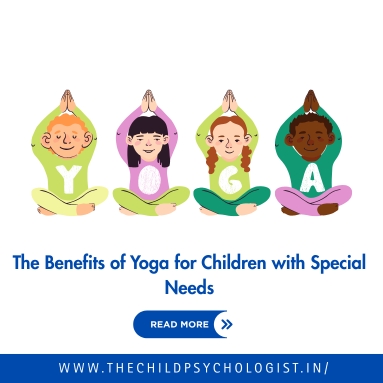By Dr. Vini Jhariya | Child & Clinical Psychologist | Founder, Urjasvini Child Development Center, Indore
A Holistic Tool for Growth and Calm
Children with special needs often face unique emotional, physical, and sensory challenges. Whether they are navigating ADHD, autism spectrum disorder, sensory issues, or developmental delays, having a consistent, calming tool can make all the difference.
Yoga, a gentle, inclusive practice, offers a holistic way to support your child’s physical strength, emotional regulation, and mental focus. As a trusted child psychologist in Indore, I’ve seen how yoga creates a supportive bridge between a child’s inner and outer world.
Why Yoga Works for Children with Special Needs
Yoga isn’t just about poses—it’s about connection. Between movement and mindfulness, body and breath, child and caregiver. For children with diverse needs, this sense of structure and calm offers:
- Predictability in an overstimulating world
- An outlet for emotional release
- A routine that builds confidence and regulation
As a childhood therapist, I often recommend yoga as part of an integrated therapy plan that promotes both development and joy.
Key Benefits of Yoga for Neurodiverse Children
Cognitive & Emotional Benefits
- Improves focus and attention span
- Builds self-awareness and impulse control
- Encourages mindfulness during overstimulation
Physical Benefits
- Enhances flexibility, posture, and muscle strength
- Boosts coordination and balance
- Supports gross and fine motor skill development
Emotional & Behavioral Benefits
- Reduces anxiety and emotional outbursts
- Encourages calmness and self-regulation
- Boosts self-confidence and emotional expression
At Urjasvini CDC, a trusted center for child development and therapy, our sessions are designed by experienced child therapists who specialize in working with neurodiverse children.
Simple & Safe Yoga Poses for Children with Special Needs
You don’t need fancy equipment or perfect form to get started. All you need is an open space and a willingness to explore together.
- Mountain Pose (Tadasana) – Grounding and awareness
- Tree Pose (Vrikshasana) – Improves balance and patience
- Child’s Pose (Balasana) – Provides a calming “reset”
- Cat-Cow Pose – Encourages spinal flexibility and coordination
- Downward Dog – Builds upper-body strength and sensory relief
Tip from a child psychologist: Focus on participation, not perfection. Celebrate effort and expression.
How to Introduce Yoga at Home or in the Classroom
- Start Slow
Begin with 2–3 poses and increase gradually.
- Use Visuals & Music
Visual cards and calming songs keep sessions engaging.
- Make It Playful
Turn poses into animals or stories—roar like a lion, balance like a flamingo!
- Practice at the Same Time Daily
Routine offers emotional safety and consistency.
- Add Breathing and Relaxation
Deep breathing, guided imagery, or simply lying down helps close the session with peace.
Tips for Parents and Educators
- Celebrate Small Wins – Focus on effort over accuracy
- Modify Poses as Needed – Use cushions or wall support
- Keep Sessions Short – Start with 5–10 minutes
- Model Participation – Join the child and co-regulate through practice
- Collaborate with Therapists – A child’s therapist or occupational therapist can provide tailored yoga routines for specific needs
Free Resource for You!
Your First 7-Day Yoga Plan for Children with Special Needs
Includes visuals, breath work, and daily affirmations.
Download by contacting Urjasvini CDC via WhatsApp: 7999215093
Yoga is not a miracle cure, but it’s a gentle, empowering practice that invites children with special needs to move, express, and regulate with confidence. As a childhood therapist, I believe yoga gives kids space to feel safe, strong, and seen.
Whether you’re a parent, teacher, or caregiver, incorporating yoga into daily life can help build deeper connections, greater calm, and emotional balance for the whole family.
